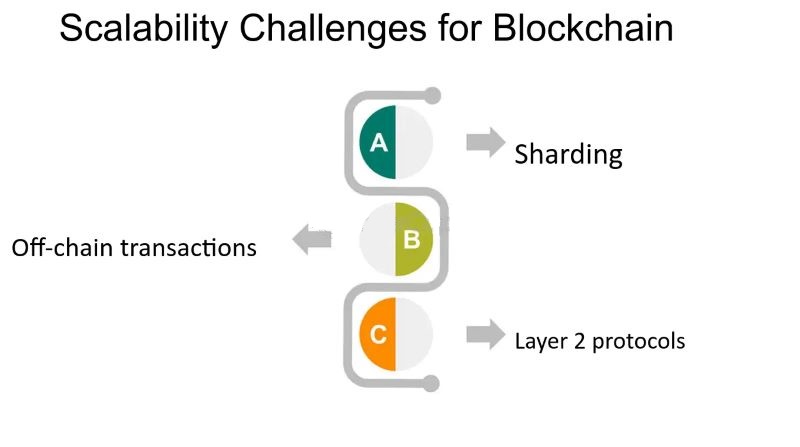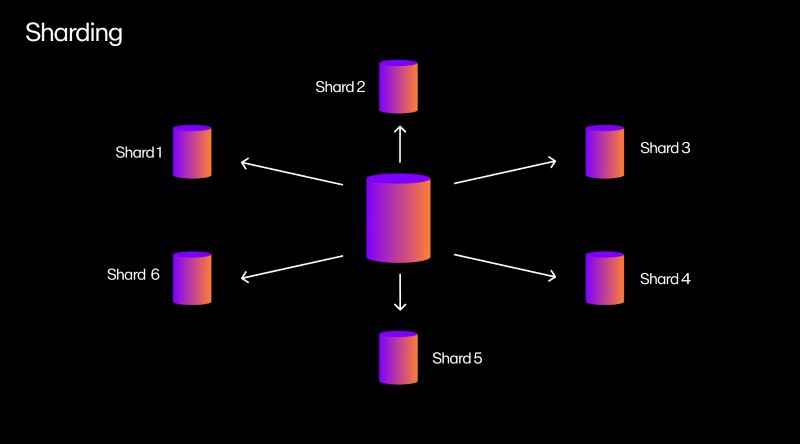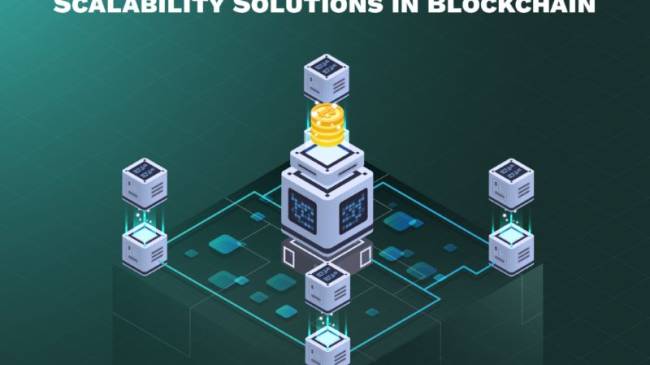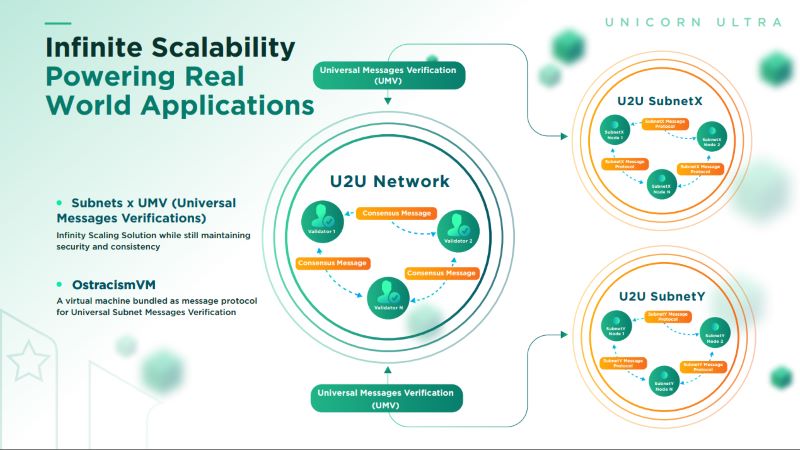Categories: Blockchain
Scalable Blockchain Solutions: The Future of Distributed Ledger Technology
Scalable Blockchain Solutions are essential for growing digital ecosystems. They offer the ability to handle increased transaction volumes efficiently, ensuring robust performance and reliability. These solutions enable seamless integration and drive innovation across various industries.
Blockchain technology has revolutionized the way we think about trust and transparency, yet its full potential remains untapped. Current limitations of blockchain, particularly in scalability, have hindered widespread adoption and prevented it from reaching its maximum potential. However, a new wave of innovation is emerging, promising to break these barriers and usher in a new era of scalable blockchain solutions. These advancements will redefine the landscape of distributed ledger technology, enabling faster, more efficient, and more accessible blockchain networks for a wide range of applications.
Table of Contents
The Scalability Challenge
Scalability is crucial for a blockchain's ability to efficiently manage increasing transaction volumes. Currently, many blockchains struggle with transaction throughput—how many transactions they can process per second - and face delays in confirmation times. This bottleneck poses significant challenges, particularly for applications requiring fast and frequent transactions like decentralized finance (DeFi), gaming, and supply chain management.
Slow transaction speeds and high fees not only frustrate users but also impede the development of practical applications. To realize its full potential, blockchain must scale to accommodate a global user base.

The scalability issue is intricately linked with the "blockchain trilemma," which illustrates the inherent trade-offs among three core blockchain attributes:
- Scalability: Efficiently processing a large number of transactions.
- Security: Resilience against attacks and data integrity.
- Decentralization: Distribution of control across network nodes rather than a central authority.
Achieving optimal balance among these priorities remains a daunting task. Improving scalability often involves compromising either security or decentralization. For instance, increasing block size can heighten vulnerability to attacks, while reducing the number of validators may diminish decentralization.
U2U Subnet introduces a Layer 2 scaling solution designed to tackle the challenges posed by the blockchain trilemma. Employing a modular architecture, U2U Subnet segregates different blockchain functionalities, allowing independent optimization of each module. This approach empowers U2U Subnet to achieve high transaction throughput, uphold robust security measures, and preserve decentralization principles.
Layer 1 Scalability Solutions: Scaling On-Chain
To address the pressing scalability issues in blockchain technology, developers are exploring Layer 1 solutions that directly enhance the core blockchain protocol itself. These innovations aim to significantly increase transaction throughput while upholding the blockchain's security and decentralization principles.
Sharding
Sharding stands out as a pivotal technique in scaling blockchain networks. It involves partitioning the blockchain into smaller segments known as "shards," each capable of independently processing a subset of transactions. This parallel processing approach boosts overall throughput, akin to expanding a highway by adding multiple lanes. By distributing transaction processing across shards, blockchains can handle a larger volume of transactions simultaneously, thereby reducing congestion and improving transaction speeds. Sharding is particularly advantageous for blockchains aiming to support extensive user bases and diverse applications.
New Consensus Mechanisms
Traditional consensus mechanisms like Proof of Work (PoW) have inherent limitations in scalability and energy consumption. Emerging alternatives such as Proof of Stake (PoS) and Delegated Proof of Stake (DPoS) offer more sustainable and efficient approaches:
- Proof of Stake (PoS): PoS selects validators based on the amount of cryptocurrency they hold and lock up (stake). This method significantly reduces energy consumption compared to PoW and facilitates faster transaction confirmations.
- Delegated Proof of Stake (DPoS): DPoS introduces a governance model where token holders vote for delegates to validate transactions and produce blocks. This streamlined decision-making process enhances consensus speed and transaction throughput.

Examples of Layer 1 Scaling Solutions in Practice
Several prominent blockchain projects are actively implementing Layer 1 scaling solutions:
- Ethereum 2.0: Ethereum's transition to Ethereum 2.0 integrates PoS consensus and sharding, promising substantial scalability improvements.
- Zilliqa: Zilliqa utilizes sharding as its foundational architecture, enabling it to process thousands of transactions per second efficiently.
- Cardano: Cardano employs the Ouroboros PoS protocol, renowned for its scalability, security, and sustainability features.
U2U Network's Contribution to Layer 1 Scaling
The U2U Network is at the forefront of research and development in Layer 1 scaling solutions for its blockchain, U2U Chain. By exploring innovative consensus mechanisms and optimizing network performance, U2U Network aims to enhance its blockchain's capacity to accommodate growing user bases and diverse applications. Through these efforts, U2U Network strives to maintain robust security measures and preserve decentralization, ensuring a scalable and sustainable blockchain ecosystem.
Layer 2 Scalability Solutions: Scaling Off-Chain
Layer 2 solutions complement Layer 1 improvements by utilizing existing blockchains to enhance scalability off-chain. These innovations alleviate main blockchain congestion, enabling faster transactions and lower costs while maintaining security and decentralization. By offloading some of the transaction processing to secondary layers, Layer 2 solutions significantly improve the overall efficiency and user experience of blockchain networks.
State Channels: Rapid Transaction Processing
State channels facilitate direct off-chain transactions between parties, settling only the final state on the main blockchain. This approach minimizes on-chain interactions, supporting swift transaction speeds and reduced fees suitable for microtransactions and frequent trading.
Sidechains: Independent Blockchain Networks
Sidechains operate autonomously alongside the main blockchain (e.g., Ethereum), utilizing their consensus mechanisms and rules. Linked through bi-directional bridges, assets can flow seamlessly between mainchains and sidechains. By diverting transactions to sidechains, the main blockchain's capacity increases, enhancing overall transaction throughput.
.jpg)
Rollups: Efficient Off-Chain Execution
Rollups process transactions off-chain while ensuring security through cryptographic proofs or summarized data posted to the main blockchain. Optimistic rollups assume transaction validity by default but allow for challenges, while zero-knowledge (ZK) rollups use advanced proofs to verify transactions without revealing sensitive information. Both types significantly enhance scalability, with ZK-rollups offering heightened security assurances.
Examples of Effective Layer 2 Solutions
- Bitcoin Lightning Network: Implements state channels to facilitate near-instant Bitcoin transactions at minimal costs.
- Polygon: Integrates sidechains and rollups to scale Ethereum applications efficiently.
- Optimism and Arbitrum: Leading optimistic rollup solutions focused on enhancing Ethereum's scalability and transaction speed.
U2U Network's Embrace of Layer 2 Solutions
The U2U Network strategically integrates Layer 2 solutions to amplify scalability within its ecosystem. U2U Subnet, functioning as a Layer 2 solution, capitalizes on modular design and off-chain processing capabilities. Additionally, U2U Network explores incorporating state channels, rollups, and other Layer 2 technologies to further elevate transaction speeds and user experience.
Emerging Scalable Blockchain Solutions
While Layer 1 and Layer 2 solutions are advancing blockchain scalability, ongoing efforts in emerging technologies and innovative approaches are pushing the boundaries of efficiency and throughput.

Directed Acyclic Graphs (DAGs)
Directed Acyclic Graphs (DAGs) present a transformative alternative to traditional blockchain structures. Unlike linear chains, DAGs consist of interconnected transactions (vertices) and confirmations (edges). Each new transaction verifies previous transactions, forming a web-like structure that eliminates miners and block creation. This design supports high transaction throughput and rapid confirmation times, potentially resolving scalability issues.
Hybrid Solutions
Integrating Layer 1 and Layer 2 solutions offers a potent strategy for achieving optimal scalability. For example, a blockchain may utilize sharding (Layer 1) to enhance network capacity while implementing rollups (Layer 2) for specific applications requiring extensive throughput. This hybrid approach leverages the strengths of both layers, delivering flexibility and adaptability across diverse use cases.
U2U Network
U2U Network stands at the forefront of blockchain innovation, actively exploring advanced scaling solutions. Their modular architecture, featuring Universal Messages Verification (UMV) and OstracismVM, addresses the blockchain trilemma while facilitating seamless scalability. U2U Network is committed to advancing new Layer 1 and Layer 2 solutions, further enhancing the scalability of its ecosystem. This dedication to innovation positions U2U Network as a pivotal player in shaping the future of scalable blockchain technologies.
The U2U Network: A Scalable Future
The U2U Network isn't merely constructing another blockchain; it's architecting a scalable future for decentralized applications (dApps). The network's steadfast commitment to scalability is evident through several key initiatives:
Research into Cutting-Edge Scaling Solutions
The U2U team is actively engaged in researching and experimenting with emerging technologies such as Directed Acyclic Graphs (DAGs) and other innovative approaches to scalability. This research endeavors to push the boundaries of blockchain performance, exploring novel methods to optimize efficiency and throughput.
Implementation of Layer 2 Technologies
U2U Network is at the forefront of integrating Layer 2 solutions like state channels and rollups. These implementations are designed to significantly enhance platform scalability by enabling faster and more cost-effective transactions. This enhancement aims to broaden the network's appeal and accessibility to a diverse array of users and applications.

Strategic Partnerships Driving Scalability
Recognizing the complexity of scalability challenges, U2U Network has forged strategic partnerships with leading projects and organizations focused on addressing scalability issues. These collaborations enable U2U to leverage collective expertise, accelerating the development of robust, scalable solutions tailored for widespread adoption.
Scalability as a Fundamental Principle
Scalability isn't just a technical hurdle for the U2U Network; it's a foundational principle driving innovation. The network firmly believes that scalability is pivotal in unleashing the full potential of blockchain technology, democratizing access to decentralized applications and services across industries.
The U2U Network stands out not merely as a participant in the blockchain revolution, but as a pioneering force addressing the scalability challenge head-on. Through U2U Subnet's innovative modular architecture and unwavering commitment to research and development, U2U is leading the charge towards a future where blockchain technology can effectively scale to meet global demands.
Prioritizing scalability empowers developers within the U2U Network ecosystem to create robust, high-performance applications capable of processing vast volumes of transactions while upholding stringent standards of security and decentralization. This advancement opens a myriad of possibilities across diverse sectors, spanning decentralized finance, gaming, supply chain management, and beyond.
U2U Network's dedication to scalability extends beyond enhancing its own platform; it aims to elevate the entire blockchain ecosystem. By continuously pushing the boundaries of technological innovation, U2U is catalyzing the realization of blockchain's full potential and democratizing its transformative impact worldwide. As U2U Network continues to evolve and innovate, its pivotal role in shaping the future of scalable blockchain solutions becomes increasingly apparent.
.png)